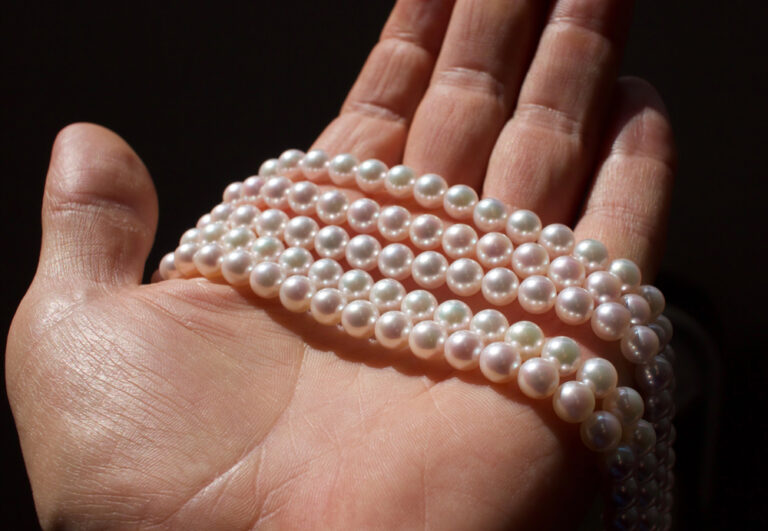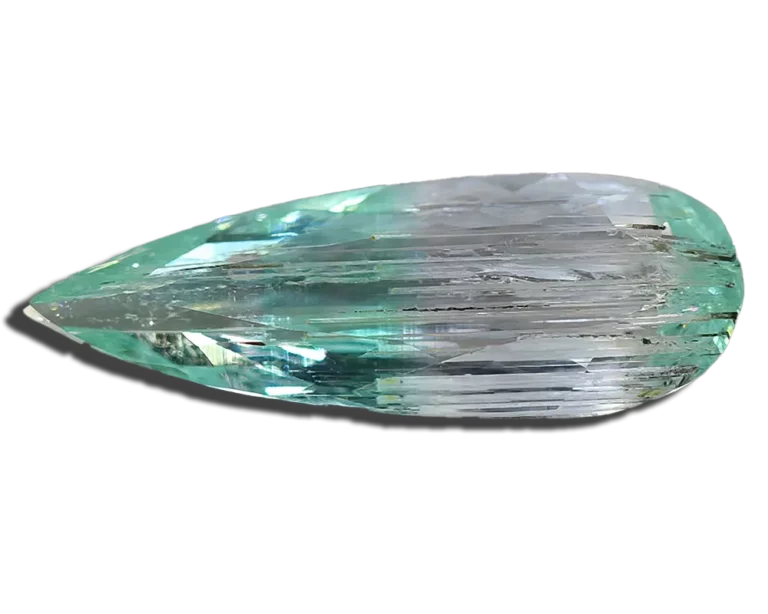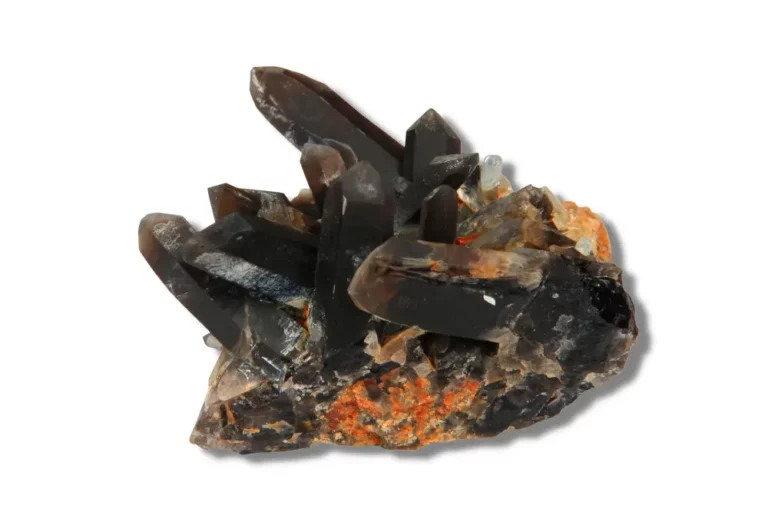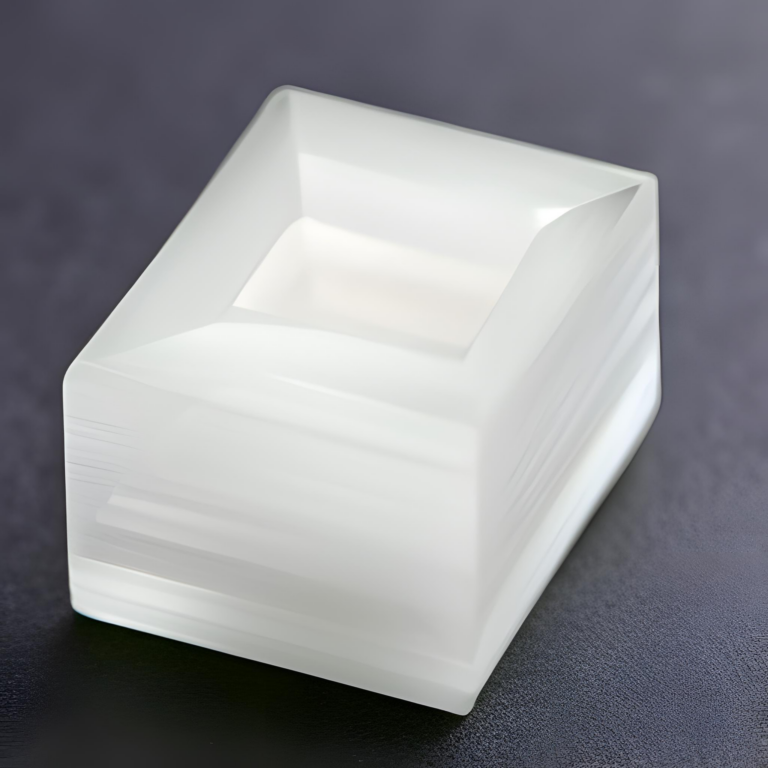Tahitian Pearls: Properties, Benefits & Meanings
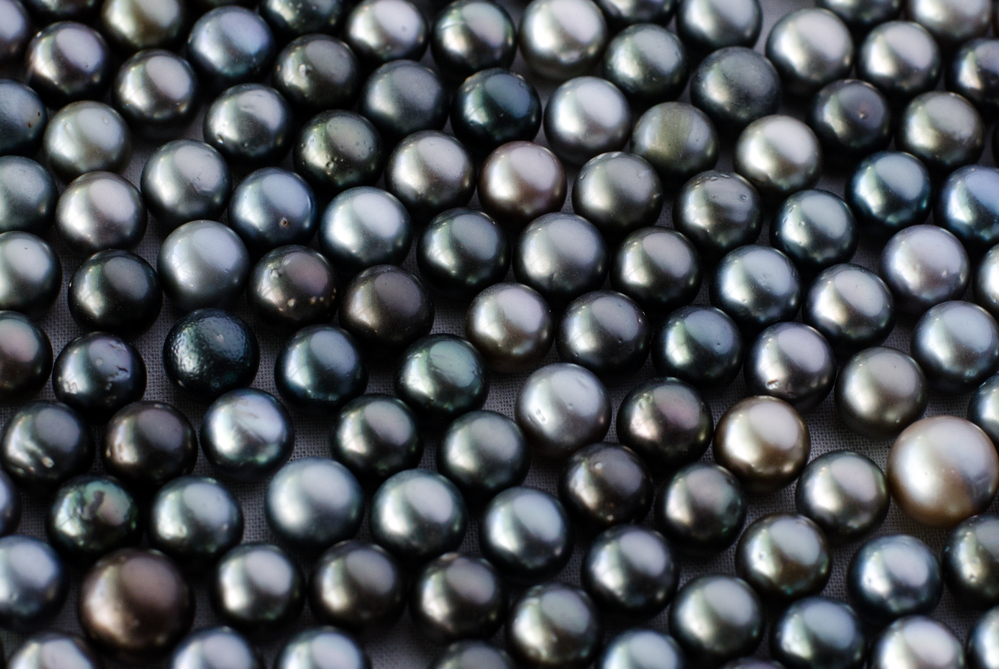
Tahitian Pearls Overview
Tahitian Pearls, also known as black pearls, are some of the world’s most sought-after and coveted pearls. These stunning pearls are known for their unique color, ranging from deep black to shimmering green and blue hues. They are also rarer than other pearl varieties, making them prized by collectors and jewelry enthusiasts.
In this article, we’ll be exploring the properties, benefits, and meanings of Tahitian Pearls.
What Is Tahitian Pearl?
Tahitian Pearls are known for their unique color, which ranges from deep black to shimmering green and blue hues. They are also larger and more irregular in shape than other pearl varieties, such as Akoya or South Sea Pearls.
These Pearls are considered one of the most valuable and desirable types of pearls on the market due to their rarity and beauty. As a result, they are often used in high-end jewelry, such as necklaces, earrings, and bracelets, and are highly prized by collectors and enthusiasts.
Tahitian pearls were only recently made popular in the pearl world, around the mid-1900s, thanks to the initiatives of Mr. Robert wan from Tahiti and those working alongside him.
The etymology of Tahitian Pearls
Tahitian Pearls are so named because they are cultivated in the waters surrounding the Tahiti Islands.
The term “Tahitian Pearl” is used to distinguish these pearls from other pearl varieties, such as Akoya Pearls, which are cultivated in the waters of Japan, and South Sea Pearls, which are produced in the waters of Australia, Indonesia, and the Philippines.
Physical Properties of Tahitian Pearls
Tahitian Pearls have a range of physical properties that contribute to their unique beauty and value. Tahitian pearls are some of the best specimens due to their colors expressed in a magical way. Some of the most remarkable physical properties include the following:
Color: Tahitian Pearls are known for their unique and varied color, which ranges from deep black to shimmering green and blue hues.
Shape: Tahitian Pearls are generally larger and more irregular in shape than other pearl varieties, such as Akoya or South Sea Pearls. They may be round, oval, baroque, or irregular.
Size: Tahitian Pearls can range from as small as 4mm to as large as 20mm or more. The size of these Pearls is typically determined by the size of the mollusk used to cultivate the pearl and the length of time it takes for the pearl to grow.
Luster: The luster of a pearl refers to its shine or gloss. These Pearls are known for their high luster, which is a result of the thickness and quality of the nacre layers that make up the pearl.
Surface: The surface of a pearl is evaluated based on the presence and size of blemishes or imperfections. These pearls generally have a smoother, blemish-free surface than other pearl varieties.
Nacre: Nacre is the substance that makes up the layers of a pearl. It is a combination of proteins and minerals secreted by the mollusk to form the pearl. The thickness and quality of this can affect the appearance and value of a pearl. Cultured Tahitian pearls are grown in French Polynesian waters and are not from Tahiti.

How are Tahitian Pearls Formed?
Tahitian Pearls are formed through a process called pearl farming, which involves cultivating pearls in mollusks, such as oysters and mussels, in a controlled environment.
The process of pearl farming begins when a small piece of mantle tissue from a mollusk is inserted into the gonad of the oyster. A pearl farmer typically inserts this tissue using a sterilized needle or a small, spherical bead called a “nucleus.”
Once the tissue is inserted, the oyster begins to secrete layers of nacre, a substance made up of proteins and minerals, around the tissue. As the layers build up, they form a pearl. The pearl grows as the oyster continues to secrete nacre, a process that can take anywhere from several months to several years, depending on the type of mollusk and the desired size and quality of the pearl.
These Pearls are typically cultivated in the black-lipped pearl oyster, also known as the Pinctada margaritifera. These oysters are native to French Polynesia, and Tahitian pearls are typically cultured in these waters. The atolls where Tahitian pearls are cultivated are located in the French Polynesian island chain.
After the pearls have reached the desired size and quality, they are harvested by the pearl farmers and prepared for sale. The pearls are then cleaned, sorted, and graded according to size, shape, color, and luster and may be drilled or set into jewelry.
Where are Tahitian Pearls Found?
Tahitian Pearls, also known as black pearls, are cultivated in the waters surrounding the French Polynesian island chain, particularly in the Society Islands and the Tuamotu Archipelago. These islands are in the Pacific Ocean, about 2,000 miles east of Australia.
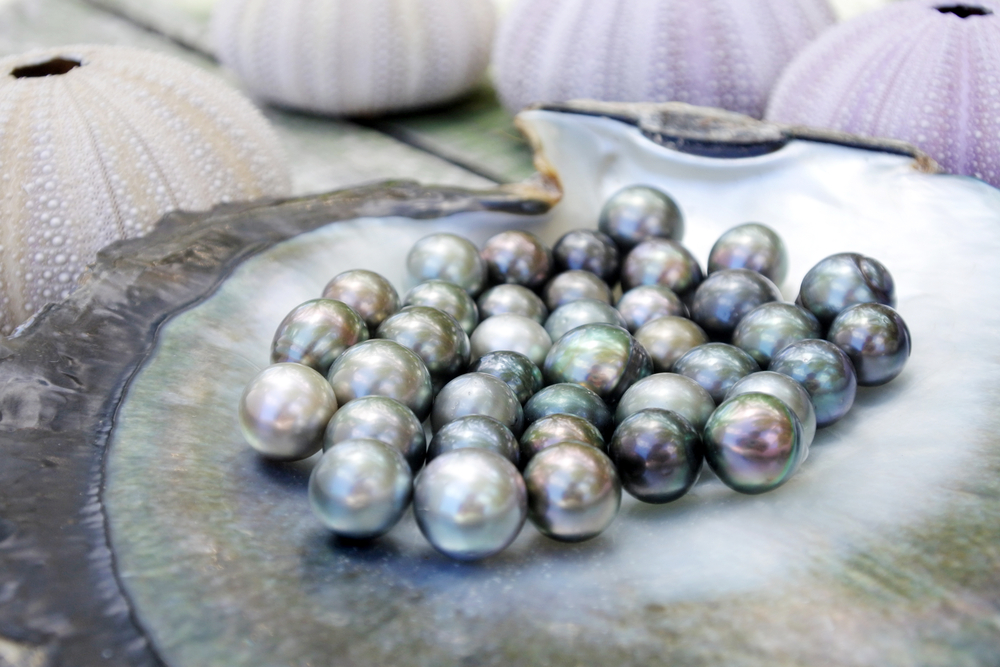
Tahitian Pearls Appearance
Tahitian Pearls are known for their unique and varied appearance, which sets them apart from other pearl varieties. Tahitian pearls are the only pearls that have a full-color range. Black-lip pearl oysters have a rainbow-like mantle which exhibits all natural colors. Some of the most notable characteristics include the following:
Color: These pearls are known for their unique color, which ranges from deep black to shimmering green and blue hues. The color can also be affected by how it is treated after it is harvested.
Shape: These pearls are generally larger and more irregular in shape than other pearl varieties, such as Akoya or South Sea Pearls. They may be round, oval, baroque, or irregular.
Size: These pearls can range from as small as 4mm to as large as 20mm or more.
Luster: The luster of a pearl refers to its shine or gloss. These Pearls are known for their high luster.
Surface: The surface of a pearl is evaluated based on the presence and size of blemishes or imperfections. These pearls generally have a smoother, blemish-free surface than other pearl varieties.
Types of Tahitian Pearls
Tahitian Pearls are known for their unique and varied color, which ranges from deep black to shimmering green and blue hues. Tahitian pearls are cultured pearls grown in salt waters. Other varieties of cultured pearls are Akoya and South Sea pearls. Freshwater Pearls are a beautiful and rare variety of pearls that are created in an artificial environment.
The Tahitian pearl is the only gem that displays a complete range of hues. Various kinds can be singled out based on their distinct shades and tints. A few frequently seen varieties include:
Black pearls: These pearls are the most well-known and sought-after type. Black pearls are considered the most valuable and rare type of Tahitian Pearl.
Silver pearls: These are characterized by their shimmering silver color and are the most beautiful and desirable.
Green pearls: These pearls are characterized by their shimmering green color, which is caused by the presence of copper. Green pearls are considered to be rare and highly prized.
Blue pearls: These pearls are characterized by their shimmering blue color, which is caused by the presence of copper. Blue pearls are considered to be rare and highly prized.
Purple pearls: These are characterized by their shimmering purple color, which is caused by the presence of copper. Purple pearls are considered to be rare and highly prized.
Pink pearls: These pearls are characterized by their soft pink color, which is caused by the presence of titanium. Pink pearls are considered to be rare and highly prized.
Aaa Tahitian pearls: These are among the most popular cultured pearls in the marketplace today. They excel in color, size, luster, and smoothness and are perfect for any occasion. Aaa pearls excel in color, size, luster, and smoothness and are perfect for any occasion.
Baroque pearls: These are among the most popular cultured pearls in the marketplace today. These pearls are grown in Tahiti and have a natural black color. Many baroque pearls are used in pearl jewelry, such as necklaces and earrings.
White gold Tahitian pearls: These are among the most popular type of Tahitian pearls. They are known for their beauty and elegance. These pearls are also very strong and durable, making them a great choice for jewelry that will be worn often.
Single-strand Pearls: These pearls are some of the most sought-after, expensive pearls in the world.
Tahitian Pearls Value and Price
Tahitian Pearls are highly valued and prized for their unique and varied color, larger size, irregular shape, high luster, and smooth surface. These characteristics contribute to the overall value and price of pearls.
Here are some factors that can affect the value and price of a Tahitian Pearl:
Shape: The shape of a pearl can affect its value and price. These Pearls are generally more irregular in shape than other pearl varieties, such as Akoya or South Sea Pearls. Round pearls are considered the most valuable, followed by oval and baroque.
Size: The size of a pearl can also affect its value and price. Tahitian Pearls can range from as small as 4mm to as large as 20mm or more. Larger pearls are generally considered to be more valuable than smaller pearls.
Color: The color of a pearl is another important factor that can affect its value and price. These Pearls are known for their unique and varied color, which ranges from deep black to shimmering green and blue hues. Black pearls are considered the most valuable and rare, followed by silver, green, blue, purple, and pink.
Luster: The luster of a pearl refers to its shine or gloss. These Pearls are known for their high luster, which is a result of their thickness. Pearls with high luster are generally considered more valuable than those with low luster.
Surface: The surface of a pearl is evaluated based on the presence and size of blemishes or imperfections. These pearls generally have a smoother, blemish-free surface than other pearl varieties. Therefore, pearls with a smoother surface are typically considered more valuable than those with a rough or heavily blemished surface.
How Can You Tell if Tahitian Pearls are Real?
There are several tests that you can use to determine whether a Tahiti Pearl is real or not. However, it’s important to note that these tests are not foolproof and should be combined with other methods, such as purchasing from a reputable dealer or having the pearl appraised by a professional. Here are a few common tests that can help you determine the authenticity of a Tahitian Pearl:
The Tooth Test: This test involves rubbing the pearl gently against the surface of your tooth. Real pearls will feel slightly gritty due to the small scales on their surface. Imitation pearls will feel smooth and hard, like a piece of glass.
The Heat Test: This test involves heating the pearl with a flame and observing how it reacts. Real pearls will not change color or shape when exposed to heat, while imitation pearls may melt or change color.
The String Test: This test involves threading the pearl onto a silk or cotton thread and observing how it moves. Real pearls will glide smoothly along the thread, while imitation pearls will feel rough or stick to the thread.
The X-Ray Test: This test involves using an X-ray machine to examine the inside of the pearl. Real pearls will have a concentric ring structure, while imitation pearls will have a solid core or a different internal structure.
The X-Ray Fluorescence Test: This test involves using an X-ray fluorescence machine to examine the chemical composition of the pearl. Real pearls will have a distinct chemical signature, while imitation pearls will have a different chemical makeup.
What Do Tahitian Pearls Symbolize?
Tahitian Pearls are symbols of beauty, luxury, and rarity. Depending on cultural and personal beliefs, they are also believed to have a range of spiritual and symbolic meanings.
In many cultures, pearls are seen as symbols of purity, innocence, and beauty. In addition, they are often associated with the moon and are believed to have calming and soothing properties. Pearls are also believed to have protective powers and are often worn as talismans or given as gifts to bring good fortune.
Tahitian Pearls are also seen as symbols of wealth and success in some cultures. They are often associated with status and considered a symbol of luxury and sophistication.
Uses of Tahitian Pearls
Tahitian Pearls are highly prized and valued for their unique and varied color, larger size, irregular shape, high luster, and smooth surface. As a result, they have a range of uses and are often used in high-end jewelry and other decorative items. They are often used in high-end jewelry and decorative items and symbolize beauty, luxury, and rarity. The beauty of Tahitian pearls is that they come in such a wide range of colors, from traditional white to black and every shade in between. Some common uses for Tahitian Pearls include:
Jewelry: Tahitian Pearls are often used in high-end jewelry, such as necklaces, earrings, and bracelets. They are usually set in gold, silver, or platinum and may be accompanied by diamonds or other precious stones. The Tahitian pearl earrings are a perfect choice for any formal occasion. They are elegant and add a touch of class to any outfit. The Tahitian pearl necklace is a stunning piece of jewelry that will elevate any simple dress into a gorgeous outfit. The Tahitian pearl bracelet and pendant are also beautiful pieces of jewelry that can be worn alone or stacked with other fine jewelry pieces.
Accessories: Tahitian Pearls are also used in various accessories, such as hair clips, brooches, and tie pins. Tahitian pearls are also available as loose pearls, which allows for a greater degree of customization when it comes to creating jewelry.
Home Decor: Tahitian Pearls may also be used in home decor items, such as vases, picture frames, and candle holders.
Religious Objects: In some cultures, Tahitian Pearls are used in sacred objects, such as rosaries or altarpieces.
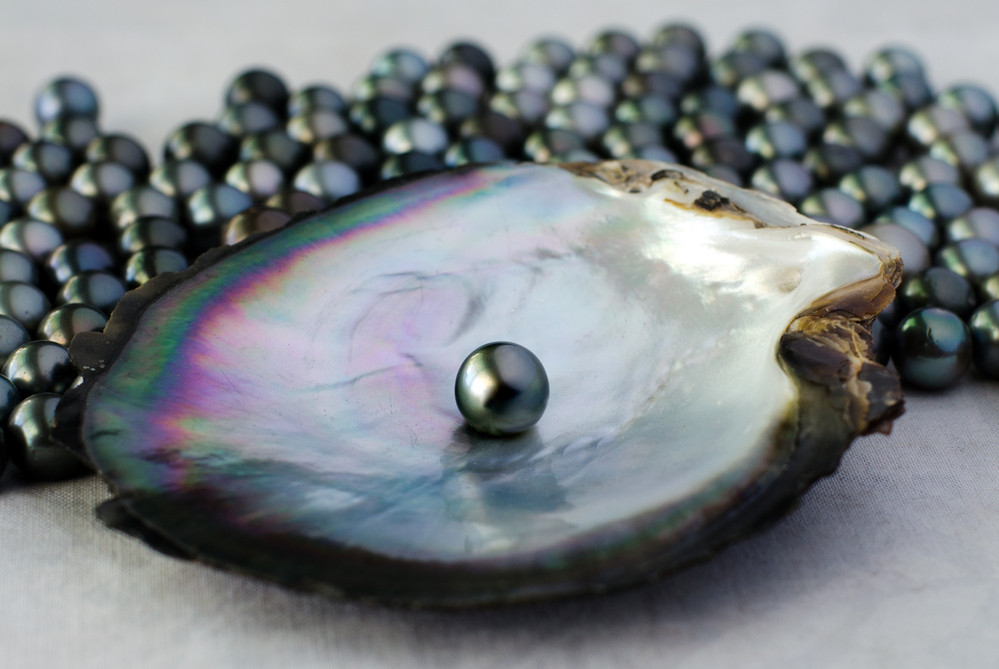
How To Take Care Of Tahitian Pearls Jewelry?
Tahitian Pearls are delicate and precious gems, and proper care is necessary to keep them looking their best. Here are a few tips for taking care of Tahitian Pearl jewelry:
Store Tahitian Pearl jewelry separately from other jewelry to prevent scratching or damage. It’s a good idea to store Tahitian Pearl jewelry in a soft pouch or a jewelry box with compartments to prevent them from rubbing against other hard surfaces.
Avoid exposing Tahitian Pearl jewelry to harsh chemicals, such as bleach or cleaning products. These chemicals can damage the pearl’s surface and cause it to lose its luster.
Clean Tahitian Pearl jewelry gently with a soft, damp cloth. Avoid harsh detergents or abrasive cleaning agents, as these can damage the pearl’s surface.
Avoid wearing Tahitian Pearl jewelry while swimming or showering, as the water can damage the pearl’s surface and cause it to lose its luster.
Have Tahitian Pearl jewelry checked regularly to ensure it is in good condition. This can help to prevent the pearls from becoming loose or falling out of the setting.
FAQ
What works well with Tahitian Pearls?
Tahitian Pearls are versatile and timeless gems that can be paired with various materials and styles. Tahitian pearls are known for their unique colors and overtones. The most sought-after Tahitian pearls are those with dark green body color and peacock overtones. Here are a few ideas for pairing Tahitian Pearls with other materials and styles:
Gold: Gold can be used in the setting of the pearl, as well as in other elements of the jewelry, such as chains or clasps.
Silver: Silver can be used in the setting of the pearl, as well as in other elements of the jewelry, such as chains or clasps.
Diamonds: Diamonds can be used as accents in the setting of the pearl, or they can be used to create a halo effect around the pearl.
Other stones: Tahitians Pearls can also be paired with other gems, such as sapphires, emeralds, or rubies. These stones can be used as accents in the setting of the pearl or as part of a multi-gemstone design.
Classic styles: Tahitian Pearls work well with traditional styles, such as simple stud earrings or a strand of pearls. These styles are timeless and can be worn for any occasion.
Contemporary styles: Tahitian Pearls can also be incorporated into more contemporary styles, such as chunky statement pieces or edgy, modern designs.
What is the Price Range of Tahitian Pearls?
The price of Tahitian Pearls can vary widely depending on a range of factors, such as size, color, shape, luster, surface quality, and rarity. It’s important to note that these price ranges are just a general guide and that the actual price of a Tahitian Pearl can vary depending on the specific characteristics of the pearl and the demand for it.
Here is a general guide to the price range of Tahitian Pearls:
Small Tahitian Pearls (4-7mm): Prices for small Tahitian Pearls can range from $50 to $200 per pearl, depending on the abovementioned factors. The USA is a great place to find Tahitian pearls.
Medium Tahitian Pearls (8-11mm): Prices for medium Tahitian Pearls can range from $200 to $500 per pearl, depending on the factors mentioned above.
Large Tahitian Pearls (12mm and up): Prices for large Tahitian Pearls can range from $500 to $1,000 or more per pearl, depending on the abovementioned factors.
What color of the Tahitian pearl is most valuable?
Black Tahitian Pearls are generally considered the most valuable and rare type of Tahitian Pearl. This is because black pearls are the most well-known and sought-after type of Tahitian Pearl and are considered the most elegant and sophisticated.
Other types of Tahitian Pearls, such as silver, green, blue, purple, and pink, are also highly prized and valued for their unique and varied color.
Can you wear Tahitian pearls in the shower?
It is generally not recommended to wear Tahitian Pearls in the shower or while swimming. This is because water can damage the pearl’s surface and cause it to lose its luster.
Additionally, the chemicals in soaps and shampoos can damage the pearl’s surface and cause it to lose its luster.
What happens to Tahitian pearls if not worn for a long time?
If Tahitian Pearls are not worn for a long time, they may be more prone to damage and deterioration. Here are a few potential risks that Tahitian Pearls may face if they are not worn for a long time:
Drying out: Tahitian Pearls are a porous gemstone and can absorb moisture from the air. Therefore, if Tahitian Pearls are not worn for a long time, they may dry out and become brittle, leading to cracks or fractures in the pearl.
Exposure to light: Tahitian Pearls are sensitive to light and can fade or yellow if exposed to direct sunlight or artificial light for a long period.
Exposure to heat: Tahitian Pearls are also sensitive to heat and can change color or shape if exposed to high temperatures for a long time.
Exposure to chemicals: Tahitian Pearls are sensitive to chemicals and can become damaged or discolored if they come into contact with harsh chemicals, such as bleach or cleaning products.
To protect Tahitian Pearls from these risks, it is important to store them in a cool, dry place, away from direct sunlight and heat.
When not to wear Tahitian pearls?
There are a few situations where it may be best to avoid wearing Tahitian Pearls. Here are a few examples:
During activities that may damage the pearls: To protect your Tahitian Pearl jewelry, it is best to avoid wearing it during activities that may be rough on the pearls, such as sports or heavy manual labor.
In the shower or while swimming: As mentioned earlier, it is generally not recommended to wear Tahitian Pearls in the shower or while swimming. This is because water can damage the pearl’s surface and cause it to lose its luster.
In direct sunlight or heat: To protect your Tahitian Pearl jewelry, it is best to avoid wearing it in direct sunlight or in situations where it may be exposed to heat, such as in a sauna or hot tub.
While using harsh chemicals: To protect your Tahitian Pearl jewelry, it is best to avoid wearing it while using harsh chemicals or in situations where it may come into contact with these substances.


